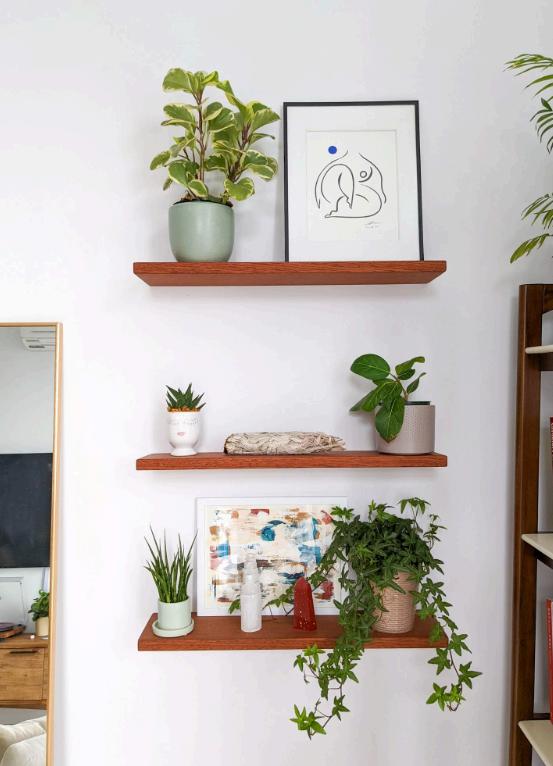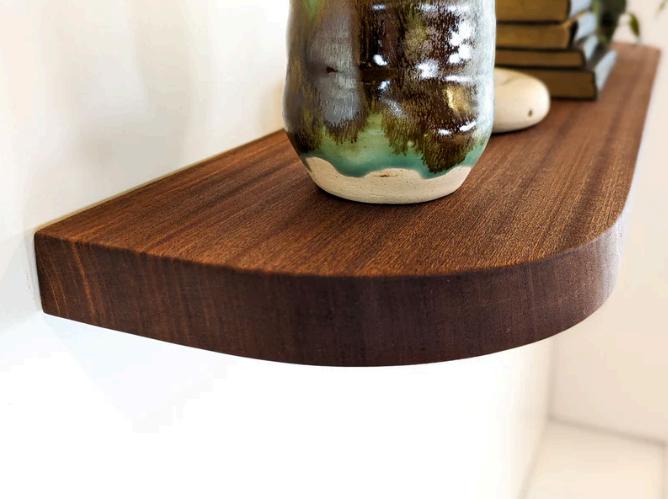

FLoating Shelf for Wall: Debunking common Weight Capacity Myths
Dark wood floating shelves are the darling of modern interior decorating. Their flat, minimalist looks fit in seamlessly across a vast variety of aesthetics from Scandinavian modern to industrial-chic And with their ubiquity comes the recurring and occasionally puzzling query: just how much weight can a floating shelf for wall support? This piece delves deep into the load-bearing capacity of floating wallmounted shelves, dispels common misconceptions, and guides you on what is most important when installing them
The Illusion of "Floating" Strength
By definition, a floating shelf for the wall has no visible brackets. The support bracket is concealed inside or at the back of the shelf, giving the impression that it's just floating against the wall Though this appearance is chic, it usually sparks the false impression that such shelves are delicate or even strictly decorative.
Myth: Dark wood floating shelves are designed to hold lightweight objects such as candles and picture frames.
Reality: Floating shelves can be very strong if they're installed right. Some shelves, particularly those with heavy-duty mounting systems, can support 30 to 100+ pounds Others, poorly installed or flimsily constructed, may not be able to support a pile of paperbacks. The reality is in the materials, mounting style, and wall type

What Determines Weight Capacity?
Several important factors dictate how much weight a floating shelf can support:
1. Mounting Hardware and Design
The majority of floating wall mounted shelves employ metal rods, cleats, or brackets that are inserted into the shelf or screwed into the wall and concealed in a hollow core. Heavy shelves usually include steel brackets that will spread weight evenly over studs
Lower-end versions may employ plain drywall anchors or nails, which greatly reduce their strength. If you're not striking studs or employing strong anchors, the shelf will have little use
Pro tip: A high-quality bracket system, anchored into wall studs, can easily support 50–100 lbs or more, depending on the span and shelf depth.
2. Wall Material
Not all walls are created equal. Drywall alone cannot support significant weight. You’ll need to locate wood studs or use special anchors for hollow walls Masonry walls (brick or concrete) can typically hold more but require appropriate drilling tools and anchors.

Stud-mounted 30-inch floating shelves have the highest load-carrying capacity Drywall-only installations, however, are usually ideal for light, decorative items
3. Shelf Material
The material of the floating shelf for the wall is most important. Solid hardwood or top-grade plywood can support more stress than particleboard or MDF A shelf that bends or dips under load is a sign of trouble.
Thicker, denser materials don’t just support more they also resist warping over time. That’s particularly important if you’re placing heavier items like books, plants, or kitchenware on them
4. Shelf Dimensions
Shelves deeper than usual will usually apply greater torque to the mounting bracket, particularly when holding a heavier item Whereas a shallow shelf (4–6 inches) will have little di�culty with 40–50 lbs, a deeper shelf (10–12 inches) needs to be attached considerably more securely in order to handle the same amount of weight
Equally, 30-inch floating shelves will need to be braced in multiple places so they do not bow or pull o� the wall.
The Dangers of Overloading
Overloading a floating shelf not only threatens a dramatic collapse, but it can also lead to long-term damage to your walls or the shelf as well. Telltale signs you're getting close to the breaking point include:
·A faint sag in the center
Loosening of screws or anchors
·Drywall or masonry cracks
·Wobbling or creaking when touched
Always play it safe. If you're still in doubt, test with incrementally increasing weights and observe how the shelf responds
Tips for Maximizing Shelf Strength
If you wish to have beautiful yet functional floating wall-mounted shelves, here is how you can position yourself to succeed:
Mount into studs where possible. Get out your stud finder and have your hardware fit at least 1.5" deep within the stud
Spend some money on quality brackets skip the cheap hardware, particularly when doing deep or long shelves
Steer clear of particleboard for weight-supported shelves Keep to solid wood, hardwood plywood, or metal.
Spread weight evenly. Please don't put all the weight on one side of the shelf. If studs are not possible, use rated anchors for your wall type
Final Thoughts
Dark wood floating shelves don't have to be mere decorative features they can be sturdy, functional storage units. But that will depend on their construction and installation. The notion that they're delicate stems from bad experiences with cheap installations or products
Get in touch with Nook WoodWorking, and you will surely get the best options!
